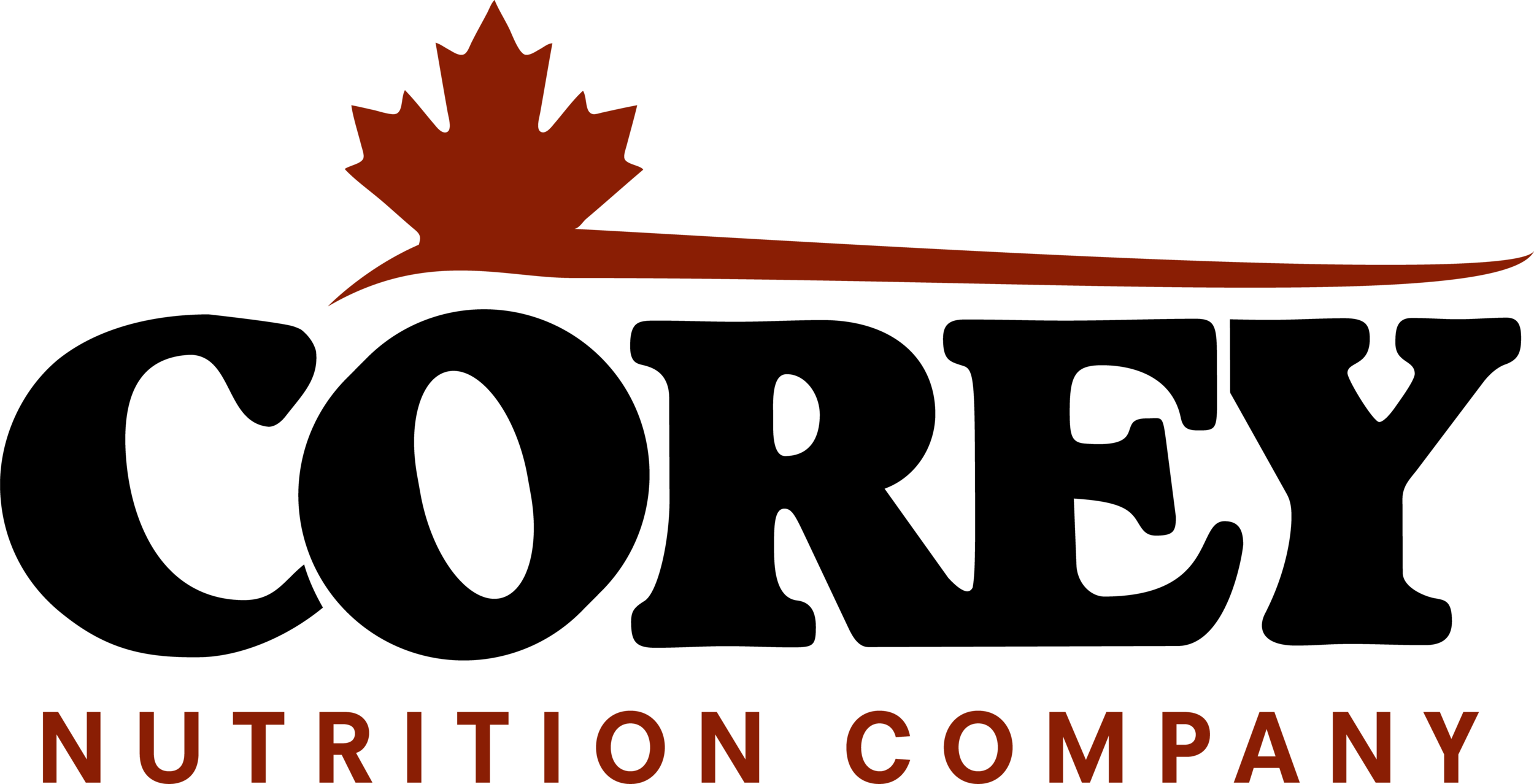How much food should I be feeding?
One of the biggest questions we at Corey are asked on a day-to-day basis is the amount of food their furry friends should be eating. “My dog is putting on weight.” “My cat looks too skinny.” As a pet owner, it can be confusing and alarming if your animal is struggling with weight issues, and we understand the critical importance of meeting their nutritional needs. Below you’ll find some calculations that can help you give your customers accurate numbers on exactly how much their pet should be eating, based on a few important factors!
Table 1: Metabolizable Energy requirement of dogs at different levels of activity.
Activity level of Adult Dog
Inactive
Mid-range
Active
Metabolizable Energy (ME) Needs
95 x Weight(kg)0.75
113 x Weight(kg)0.75
130 x Weight(kg)0.75
Table 2: Metabolizable Energy requirements of puppies, pregnant and lactating dogs.
Stage
Post-weaned puppy
40% of adult body weight
80% of adult body weight
First 4 weeks of pregnancy
After the 4th week of pregnancy
Lactating
Metabolizable Energy (ME) Needs
2 x (130 x Weight(kg)0.75)
1.6 x (130 x Weight(kg)0.75)
1.2 x (130 x Weight(kg)0.75)
130 x Weight(kg)0.75
(130 x Weight(kg)0./75) + (26 x Weight(kg))0.62
3 x (130 x Weight(kg)0.75)
Table 3: Metabolizable Energy requirement of cats at different life stages and body types.
Life stage/body type of Cats
0-19 Weeks
20-29 Weeks
30-39 Weeks
40-49 Weeks
Overweight Adult
Lean Adult
Metabolizable Energy (ME) Needs
250 x Weight(kg)
130 x Weight(kg)
100 x Weight(kg)
60 x Weight (kg)
130 x Weight(kg)0.40
100 x Weight(kg)0.67
For example, let’s pretend we have a 10kg (22lbs) dog. First, we’ll decide the activity level of our pet. If our companion is high energy, we’d consider them Active; if they enjoyed a couple walks around the neighbourhood a day, we’d consider them Mid-range; and if they are getting a bit older and really just go out as a necessity, we’d consider them Inactive. For the furry friend in our example, let’s consider them to be Mid-range. The first thing we will need to do is calculate the quantity of energy they will need to fuel their body throughout the day. This quantity of energy is what is known as Metabolizable Energy (ME). For your standard pet, the basic energetic requirement can be calculated using the equations we’ve provided in Table 1. Should our dog be a puppy, pregnant or lactating, consult Table 2 for additional calculations to determine their ME/day needs. But for now, we’ll keep it simple. Remembering our dog is 10kg, mid-range activity, we’d use the following equation to calculate the ME required per day.
113 x Weight(kg)0.75
So we now know that our pet requires 635.45 kilocalories of Metabolizable Energy per day. The next step is to find the ME of the food we will be giving them. Let’s use ProSeries Weight Management Dog Food as an example. Looking on the back of the bag, we find the Calorie Content showing us that the ME of this food is 3080 kcal/kg. Knowing these numbers we can now calculate how much to feed our dog using the following equation:
Daily food volume requirement = Daily Metabolizable Energy Requirement (kcal / day) / ME of the food (kcal . kg)
Daily food volume requirement = 635.45 kcal/day / 3080 kcal/kg = 0.21 kg food required/day
=0.21 kg x 2.2 lb/kg = 0.462 lbs = 7.39 ounces = 2.1 cups/day
The same calculations can be done for a cat, just consult Table 3 to see the ME requirements for cats at different life stages and body types to determine how much to feed your fine feline friends!
References:
Case, L. P. et al. (2011) Canine and Feline Nutrition. Maryland Heights, Missouri: Mosby Elsevier.National Research Council (U.S.). Ad Hoc Committee on Dog and Cat Nutrition. (2006) Nutrient Requirements of Dogs and Cats. Washington, D.C.: The National Academies Press.
